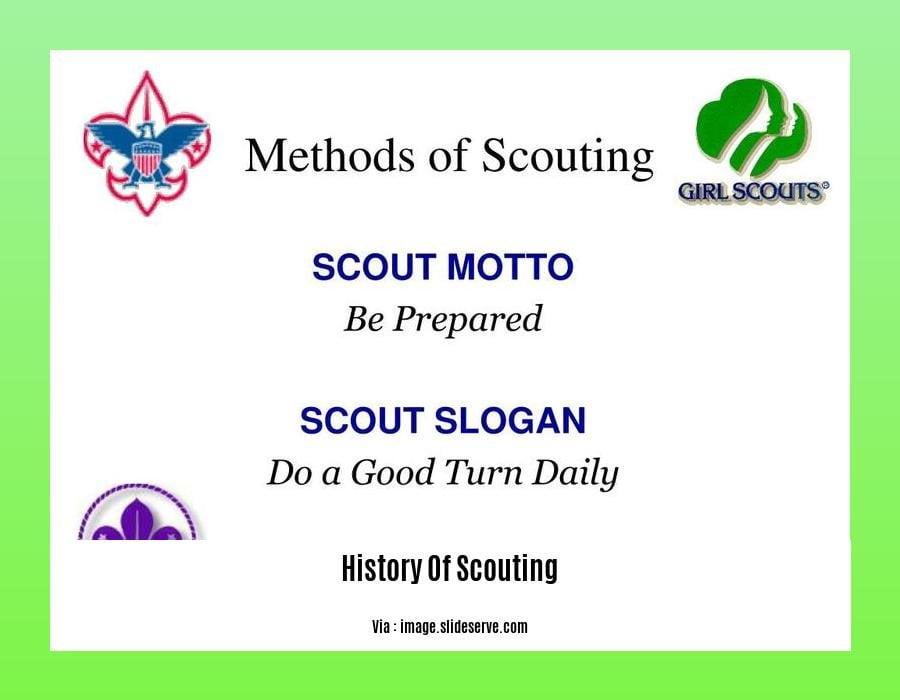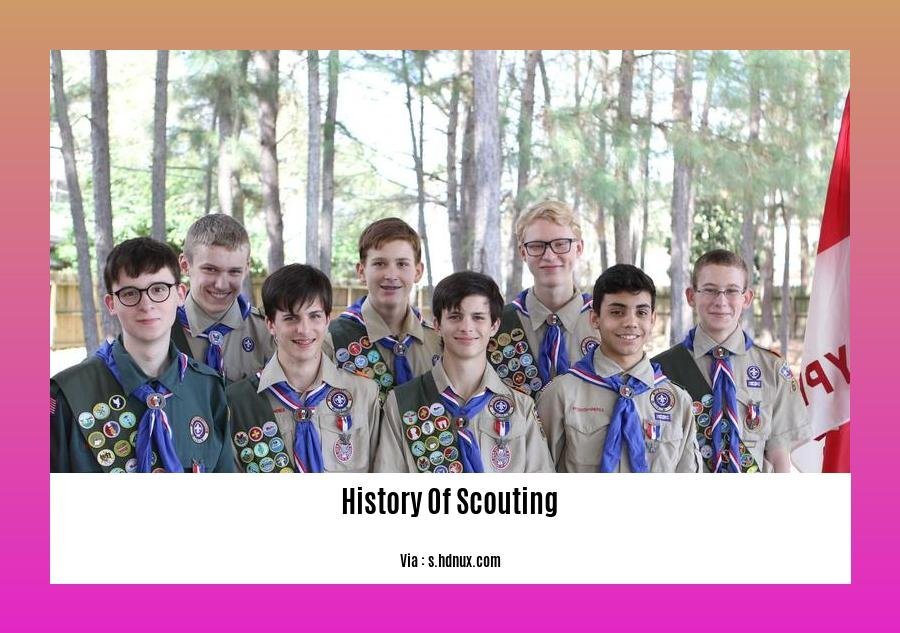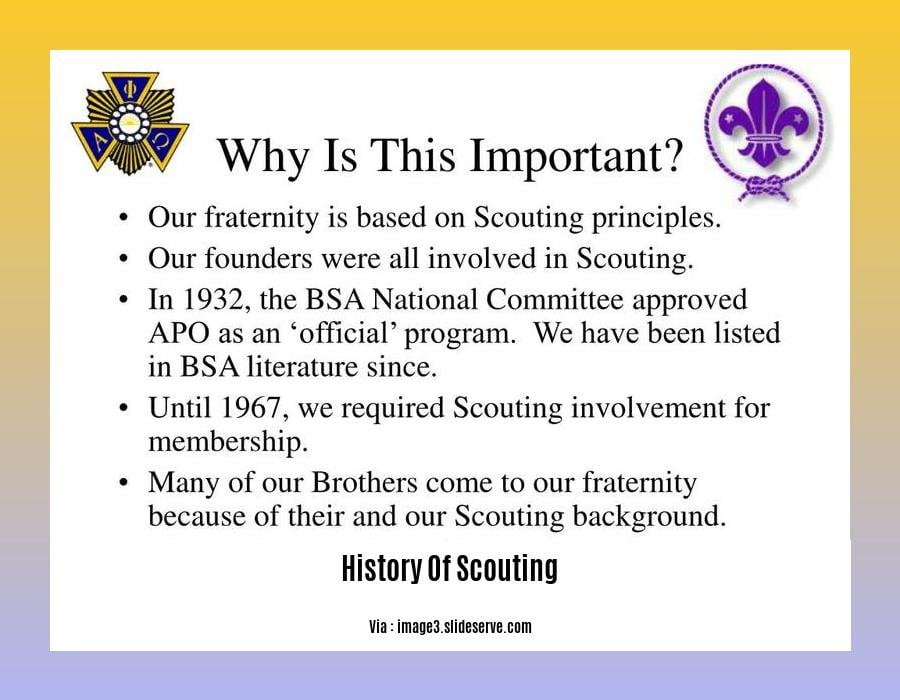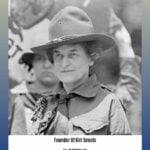Embark on a captivating journey through the annals of Scouting, a movement that has indelibly shaped the lives of countless individuals across the globe. [- Unveiling the History of Scouting: A Journey Through Time and Impact] delves into the humble origins of this remarkable organization, tracing its evolution from a modest initiative to a worldwide phenomenon that continues to inspire and empower young people to this day.
Key Takeaways:
Scouting is the world’s leading educational youth movement, with over 57 million Scouts in more than 200 countries.
Founded in 1907 by Robert Baden-Powell, Scouting’s roots can be traced to the publication of “Scouting for Boys” in 1908.
Experiential learning, peer-led instruction, and positive role models guide Scouting’s approach to education.
The Scout Method fosters the development of young people, helping them reach their full potential as individuals and responsible citizens.
The Scout Promise and Law embody the fundamental principles that all Scouts uphold.
Scouting has positively impacted millions of young people worldwide, promoting character development, leadership skills, and a sense of service.
As a global movement, Scouting unites young people to learn, grow, and make a difference in their communities.
The World Organization of the Scout Movement (WOSM) represents the world’s largest youth organization, with over 50 million members.
Scouting relies on the dedication of millions of volunteers who contribute their time and energy to support young people’s growth.
Scouting: A Journey Through History and Impact

Step into a world of adventure, camaraderie, and self-discovery as we trace the history of scouting, a movement that has shaped the lives of millions worldwide. From its humble beginnings on Brownsea Island in 1907 to its current status as a global phenomenon, scouting has left an indelible mark on the tapestry of history.
The Genesis of a Global Movement
The story of scouting begins with Robert Baden-Powell, a British Army officer who witnessed firsthand the need for character development and practical skills among young people. Inspired by his experiences in the Boer War, Baden-Powell penned Scouting for Boys, a manual that introduced the world to the principles of scouting.
The Scouting Method: A Unique Approach to Youth Development
At the heart of scouting lies the Scouting Method, a holistic approach to education that emphasizes experiential learning, peer-led instruction, and positive role models. This unique system empowers young people to develop their physical, intellectual, social, and spiritual potential, fostering well-rounded individuals committed to making a difference in their communities.
The Promise and the Law: Guiding Principles for Scouts Worldwide
The Scout Promise and Law serve as the moral compass for scouts everywhere, instilling values of honesty, loyalty, helpfulness, and respect. These principles guide scouts in their daily lives, shaping their character and helping them become responsible citizens and global change-makers.
Scouting’s Global Impact: A Catalyst for Positive Change
Scouting has played a transformative role in the lives of countless young people worldwide, empowering them with skills, confidence, and a sense of purpose. Through community service projects, outdoor adventures, and leadership training, scouts learn teamwork, problem-solving, and the importance of giving back to society.
Scouting Today: A Thriving Global Movement
Over a century since its inception, scouting continues to thrive as a global movement, reaching young people from all walks of life. With over 50 million members in more than 200 countries and territories, the World Organization of the Scout Movement (WOSM) stands as the largest youth organization in the world.
Conclusion: A Legacy of Adventure, Service, and Camaraderie
Scouting’s rich history is a testament to its enduring appeal and transformative power. As the movement continues to evolve, its core principles remain steadfast: fostering character development, promoting global citizenship, and empowering young people to make a positive impact on the world.
Uncover the rich history of Scotland in the podcast series here: history of scotland podcast. Dive into the fascinating history of scouting and guiding, a movement that has shaped the lives of millions: history of scouting and guiding. Test your knowledge of scouting history with our engaging quiz: history of scouting quiz.
Scouting During Wartime

In the dire throes of war, when nations teetered on the precipice of ruin, the indomitable spirit of scouting endured, shining brightly amidst the dark clouds of conflict. From the trenches of World War I to the battlefields of World War II, scouts valiantly stepped forward, their skills and unwavering commitment proving invaluable to their communities and countries.
Scouts: A Lifeline of Support
As the cataclysm of war engulfed the world, scouts emerged as beacons of hope, selflessly offering their services to those in need. In the trenches, they became messengers, their knowledge of signaling and map reading proving vital in relaying critical information. Off the battlefields, they served as first aid providers, their training in medical care bringing solace to the wounded.
Adapting to the Darkness
The outbreak of World War II brought about a new set of challenges for scouts. With their homeland under siege, British scouts played a crucial role in bolstering the nation’s defenses. They served as air-raid wardens, keeping watch for enemy aircraft and ensuring the safety of their communities. They also assisted in delivering food and supplies to those affected by the relentless bombing campaigns.
Beyond Borders: A Global Impact
The impact of scouting during wartime extended far beyond the borders of Britain. In countries across the globe, scouts demonstrated resilience and adaptability, using their skills to support their communities and assist those displaced by the ravages of war. In occupied territories, scouts operated clandestinely, providing food, shelter, and information to resistance movements.
Key Takeaways:
Scouts played a crucial role in both World Wars, using their skills and training to support their communities and countries.
Scouts served as messengers, first aid providers, and air-raid wardens, among other roles.
The movement’s impact extended beyond Britain, with scouts in many countries supporting their communities and assisting those displaced by war.
Scouts demonstrated resilience and adaptability, using their skills to support their communities and assist those displaced by the ravages of war.
Citations:
Scouts during the Wars | Scouts
World Organization of the Scout Movement
Diversity and Inclusion: Embracing Unity in Scouting
Scouting, a global movement that has touched the lives of millions, is built on the foundation of diversity and inclusion. With National Scout Organizations in 172 countries, the World Organization of the Scout Movement (WOSM) boasts a membership of 57 million Scouts, representing a kaleidoscope of cultures, beliefs, and experiences.
The movement’s commitment to diversity is evident in its core principles, which promote understanding, respect, and acceptance among Scouts. The Scout Promise and Law, which guide the conduct of Scouts worldwide, emphasize the importance of being friendly, considerate, and helping others. These principles foster a culture of inclusivity, where every Scout feels valued and respected regardless of their background or circumstances.
Scouting’s diverse membership is a testament to its ability to break down barriers and create a sense of belonging for all. From the bustling streets of cities to the remotest corners of the globe, Scouting provides a space where young people from all walks of life can come together, learn from one another, and grow as individuals.
Programs and Initiatives for Diversity and Inclusion
WOSM and its National Scout Organizations have implemented various programs and initiatives to promote diversity and inclusion within the movement. These initiatives focus on creating an environment where every Scout feels welcome, respected, and has the opportunity to reach their full potential.
One such initiative is the Diversity and Inclusion Steering Committee, which works to ensure that the movement’s policies and practices are inclusive and non-discriminatory. The committee also provides guidance and support to National Scout Organizations in developing their own diversity and inclusion strategies.
Another key initiative is the World Scout Youth Forum, which brings together young Scouts from around the world to discuss issues related to diversity, inclusion, and global citizenship. The forum provides a platform for young people to share their experiences, learn from one another, and develop recommendations for making Scouting more inclusive.
Breaking Down Barriers and Fostering Unity
Scouting’s commitment to diversity and inclusion is not just a matter of principle; it’s a practical necessity. In a world that is increasingly interconnected and interdependent, it is essential for young people to learn how to live and work together harmoniously with people from different backgrounds and cultures.
Scouting provides a unique opportunity for young people to develop the skills and attitudes necessary for fostering unity in a diverse world. Through shared experiences, teamwork, and service to others, Scouts learn to appreciate and respect differences, break down stereotypes, and build bridges of understanding.
Key Takeaways:
- Scouting’s commitment to diversity and inclusion is reflected in its core principles, which promote understanding, respect, and acceptance among Scouts.
- WOSM and its National Scout Organizations have implemented various programs and initiatives to promote diversity and inclusion within the movement.
- Scouting provides a unique opportunity for young people to develop the skills and attitudes necessary for fostering unity in a diverse world.
Citations:
– Diversity and Inclusion | WOSM – World Organization of the Scout Movement
– Guidelines for Diversity and Inclusion in Scouting – Issuu
Challenges and Adaptations: The Evolving Landscape of Scouting
In a world where change is constant, the ability to adapt and overcome challenges is paramount. Scouting, with its rich history spanning over a century, has faced numerous obstacles. Yet, through resilience and innovation, it has not only endured but also thrived.
Challenges
Global Conflicts: World wars and regional conflicts have significantly impacted Scouting. During World War I, many Scouts put their skills to practical use, such as camp cooking, signaling, and sailing. Scouting activities were restricted or even banned in some countries due to wartime conditions.
Changing Societal Values: As societies evolve, so do the values and expectations placed on youth organizations. Scouting has had to adapt to changing attitudes towards gender roles, diversity, and inclusion to remain relevant and appealing to young people.
Technological Advancements: The digital age has brought both opportunities and challenges for Scouting. While technology can enhance Scouting experiences and reach a broader audience, it also raises concerns about online safety and the balance between virtual and real-world interactions.
Adaptations
New Programs and Initiatives: Scouting has continuously developed new programs and initiatives to meet the changing needs of young people and society. These include programs focused on environmental conservation, leadership development, and global citizenship.
Diversity and Inclusion: Scouting has made significant efforts to promote diversity and inclusion, welcoming young people and adult volunteers from all backgrounds. This includes initiatives to increase female participation and leadership, as well as outreach to underserved communities.
Digital Transformation: Scouting has embraced technology to enhance its programs and reach a wider audience. Online platforms and virtual activities have been introduced to complement traditional Scouting experiences.
Partnerships and Collaborations: Scouting has forged partnerships with organizations such as schools, businesses, and NGOs to expand its reach and impact. These partnerships provide resources, expertise, and opportunities for Scouts to engage in meaningful projects.
Key Takeaways:
Scouting has faced challenges such as global conflicts, changing societal values, and technological advancements throughout its history.
To adapt, Scouting has developed new programs, embraced diversity and inclusion, utilized technology, and formed partnerships.
Scouting’s ability to adapt and evolve has allowed it to remain relevant and impactful in a changing world.
Sources:
World Organization of the Scout Movement
The Scout Association
















